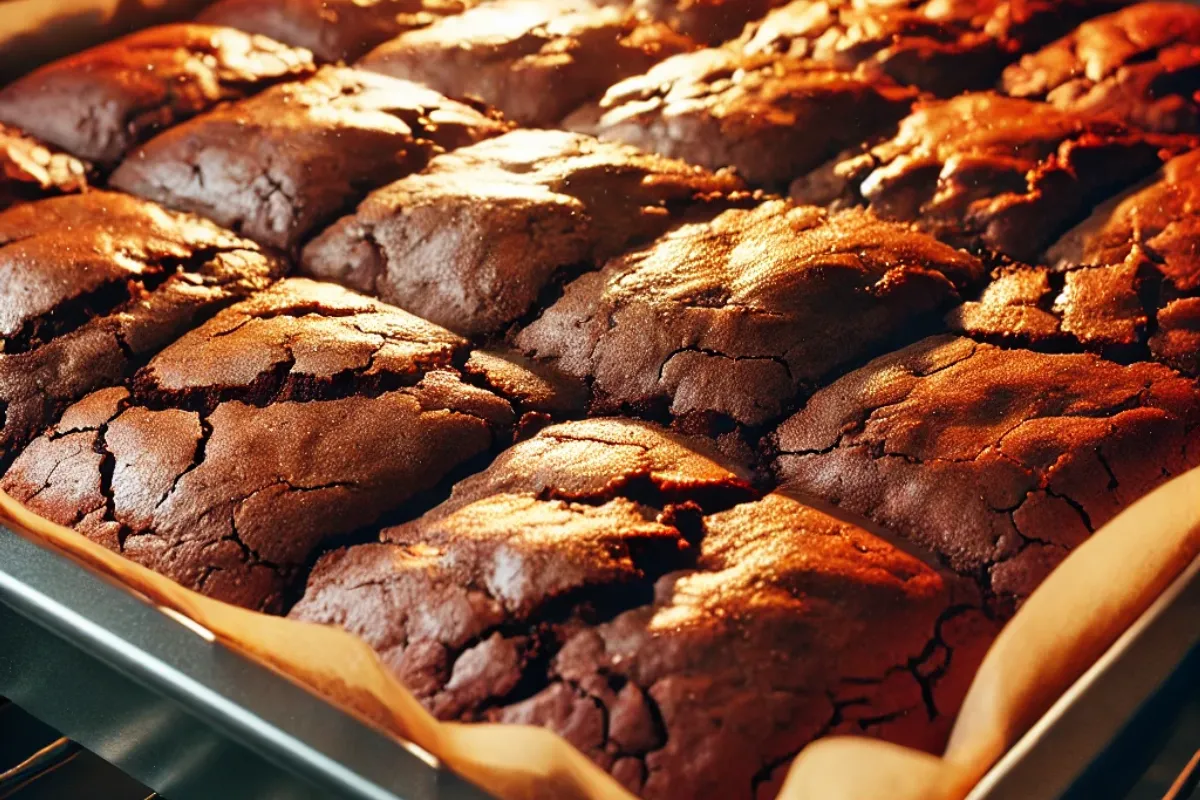Brownies are a universally loved dessert, and their texture can vary significantly depending on how they are baked. Some prefer a dense, fudgy texture, while others enjoy a lighter, puffier version. But what exactly makes brownies puff up in the oven? In this article, we’ll explore the ingredients and techniques that help brownies rise, giving you control over the final texture of your brownies.
Introduction to Brownie Puffing
When baking brownies, the way they puff up plays a significant role in their texture. A well-risen brownie tends to have a lighter, cakey consistency, while a flat brownie is usually dense and fudgy. Achieving that perfect puff depends on using the right combination of leavening agents and following proper mixing techniques. To learn more about the differences in brownie textures, you can read this guide on cakey vs fudgy brownies.
Leavening agents, such as baking powder and baking soda, are essential for helping brownies rise. These ingredients create a chemical reaction that releases gas bubbles in the batter, causing it to expand. Additionally, how you mix your ingredients can also have a big impact on the puffing process. If you’re interested in exploring how mixing affects brownie texture, check out this article on why brownies turn into cake.
Key Ingredients That Make Brownies Puff Up
Several ingredients work together to create that signature puff in brownies. Each plays a specific role in contributing to the rise and texture.
Leavening Agents
- Baking Powder: Baking powder is commonly used in brownies to help them rise. It contains both an acid and a base, which react when mixed with wet ingredients to produce carbon dioxide, making the brownies puff up.
- Baking Soda: Baking soda requires an acidic ingredient to activate. When used in brownie recipes, it can produce a more pronounced rise, but it needs to be carefully balanced with other ingredients to avoid an overly puffed result.
For more insight into the differences between baking powder and baking soda, you can explore this article on substitutes for butter in brownies, which explains how various substitutions affect baking results.
Eggs
- Whipped Egg Whites: Egg whites help trap air in the batter, which expands during baking, causing the brownies to rise. The more air you incorporate into the batter, the more puff you’ll get.
- Yolks for Moisture: While egg whites are essential for lift, egg yolks add richness and moisture to balance the texture.
The Role of Mixing Techniques
How you mix the ingredients for your brownies can significantly affect their texture. Overmixing or undermixing can lead to various issues that affect the puffing process.
Overmixing vs. Undermixing
- Overmixing: Introducing too much air into the batter can cause the brownies to rise quickly and then collapse as they cool. Be careful not to overmix, especially if you want a denser texture.
- Undermixing: If you don’t mix the batter enough, you might end up with dense, flat brownies. Achieving the right balance ensures that the brownies puff up evenly without becoming too airy.
If you want to know how much mixing is ideal for brownies, check out this comprehensive guide on brownie texture.
Baking Temperature and Equipment
The oven temperature you choose can also play a role in how much your brownies puff up. Too high a temperature can cause the edges to set too quickly, preventing the center from rising properly.
- High Oven Temperature: A high heat will cause the outer edges to rise and set quickly, creating a crispy edge but potentially leaving the center undercooked. This technique works best for those who enjoy a puffed top with a soft interior.
- Lower Temperature: Baking at a lower temperature allows the brownies to rise more evenly, which is ideal for achieving a uniform, puffed texture throughout.
Understanding Brownie Textures
The amount of puff your brownies achieve affects their final texture. Here are the main types of brownie textures, each created by varying the puff:
Cakey Brownies
- Cakey brownies rise the most due to the use of more leavening agents. These brownies have a light, airy texture that is closer to cake than traditional dense brownies. If you want to learn how to make your brownies more cakey, you can follow this guide on turning brownies into cake.
Fudgy Brownies
- Fudgy brownies rise less and have a dense, rich texture. They typically use less baking powder or soda and more fat, such as butter or chocolate.
Chewy Brownies
- Chewy brownies strike a balance between cakey and fudgy. They rise just enough to create a chewy texture while maintaining a denser bite.
FAQs Based on “People Also Ask”
Why did my brownies puff up too much?
Brownies can puff up too much if there is too much baking powder or baking soda in the recipe. Overmixing the batter can also introduce too much air, causing the brownies to rise quickly and then collapse.
How do I prevent brownies from becoming too cakey?
To avoid cakey brownies, reduce the amount of baking powder or baking soda. You can also increase the fat content, such as butter or chocolate, to keep the brownies dense and fudgy.
What makes brownies flat instead of puffed up?
If your brownies are flat, it may be due to not using enough leavening agents or not mixing the batter enough to incorporate air.
Can I reduce the amount of leavening agents in my brownie recipe?
Yes, reducing the amount of leavening agents will result in denser, more fudgy brownies. However, be cautious as eliminating them completely may prevent the brownies from rising at all.
Conclusion and Final Tips
To summarize, what makes brownies puff up is the result of a combination of ingredients like leavening agents and eggs, as well as how you mix the batter and control the baking temperature. Whether you want a light, cakey brownie or a dense, fudgy one, you can adjust your ingredients and techniques accordingly to achieve the perfect texture.
For more brownie inspiration, consider trying out a different twist with this banana brownie recipe, which incorporates fruit to create a moist, flavorful dessert. Happy baking!

